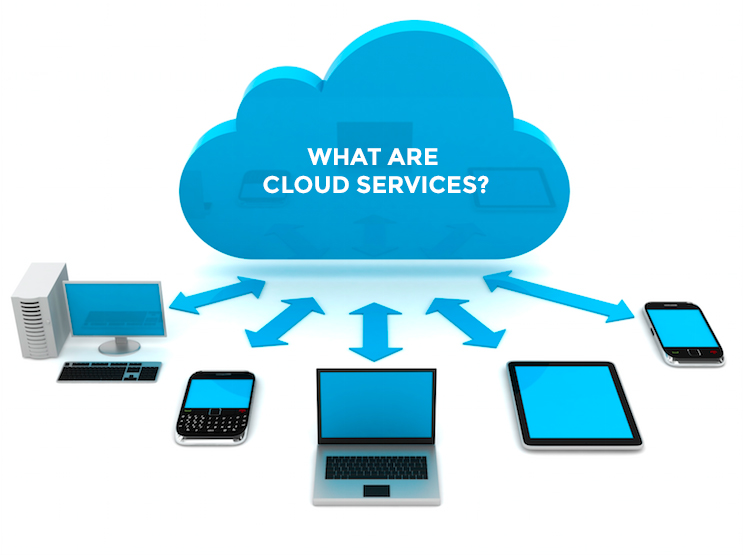There’s a lot of buzz surrounding cloud computing at the moment, but what’s the service behind the hype? Let’s investigate what cloud computing is and see if it’s right for your business.
What is the Cloud?
“The cloud,” along with terms like “cloud computing” or “cloud storage” are used to describe services that are stored remotely on the internet, rather than on your local network. Most of us use it every day, for things like:
• Storing and backing up files on Dropbox, OneDrive, or Google Drive.
• Web-based e-mail accounts, like those available on Gmail, Outlook.com or Yahoo.
• Keeping in touch with friends or family on LinkedIn, Facebook, or Twitter.
• Sharing documents with Evernote, or Google Docs.
• Hosting a website using platforms like WordPress.
One of the most interesting things that cloud computing is doing at the moment is allowing “dumb terminals,” devices that have just enough hardware in them to run the program that connects the device to the remote server where the real processing happens. This means that individual terminals can be constructed for a far cheaper cost per unit and be just as efficient – provided of course that the server they connect to remains online.
The Silver Lining
The main reason that cloud services are so successful is that cloud services are convenient. Just like a Gmail account allows you to access your e-mails from any computer, cloud services allow you to access your information from anywhere or even share work spaces with colleagues across the country. You can start working on a file at home in the morning, edit it during the day, and use your phone to have it sent to a client in the evening. Cloud computing essentially offers a virtual office at your fingertips. Things like your personal preferences, appointments, saved files can all be accessed quickly and easily, and all they need is an internet connection.
Cloud services are also reliable. Backing up digital information has always been an important (and onerous) part of managing technology. Cloud services generally include off-site backups in large data centres (often with multiple redundancies and disaster recovery plans.) Your data is much less vulnerable to being lost to a power surge or hardware failure, and software updates can be pushed out quickly without any local disruption of services.
Finally, cloud services are scalable. Upgrading local network infrastructure to meet changing business needs can run into thousands of dollars, but when you are storing most of your data remotely, you can take advantage of a data centre’s economy of scale to increase your usage for a much lower cost. This has also led to the trend of Managed IT Services, companies that remotely administrate the network and technical needs of organisations that don’t need or want a full-time IT department.
The Storm Clouds
Cloud computing does have a few downsides, the first of which is that cloud computing applications rely on an active internet connection to access some or all of their features. If you are using a cloud solution and your internet goes down, you could temporarily lose access to some or all of the functionality of your solution, as most of the data is stored off site.
The second disadvantage is that you give up some of your control when you move services to a cloud solution. This means you lose some visibility on your organisation’s network, and will rely a bit more heavily on the service level agreements you have with your cloud services provider. While cloud services are generally more reliable than a standard network, they do still suffer from downtime occasionally, which can impact your business.
Tying into this is data security and compliance. Of primary concern to medical centres and organisations with Government contracts, it is always recommended to investigate if a proposed cloud solution will allow you to remain compliant with relevant privacy standards.
The final disadvantage is unexpected costs. While cloud services do cut down on your internal IT expenditure, they don’t eliminate it entirely, and you’ll often need a faster internet connection with a bigger download limit to compensate, as cloud services will be sending and retrieving information from remote servers constantly. In addition, cloud services tend towards operating off a subscription model, which can be beneficial (by staggering the costs of a service over time) but can lead to increased costs on the long term if you don’t keep track of your IT infrastructure.
In Summary:
The emergence of cloud solutions has provided many ways to increase productivity and flexibility in the modern workplace, allowing many improvements that can benefit businesses, employees and consumers. Of course, the main thing that is important to consider when deciding if a cloud solution is right for you is this: How much control are you willing to give away in exchange for a more efficient service?



